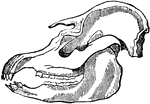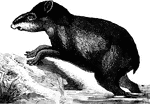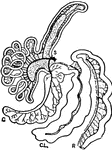Clipart tagged: ‘tapir’

Palaeotherium magnum
"The Palaeotherium magnum was of the size of a horse, but thicker and more clumsy; its head…

Palaeotherium minus
"The Palaeotherium minus was smaller in size compared to the Palaeotherium magnum,…

Perissodactyle
"Bones of the fore foot of existing Perissodactyle. Tapir (Tapirus indicus)." —The Encyclopedia…

Tapir
Tapirs are found in South America. They have four toes in front and three behind. The snout is prolonged.

Tapir Skull
This illustration shows the skull of a tapir. Tapirs are large browsing animals, roughly pig-like in…

Malayan Tapir
This illustration shows the largest of the four species of tapir and the only one native to Asia. The…



